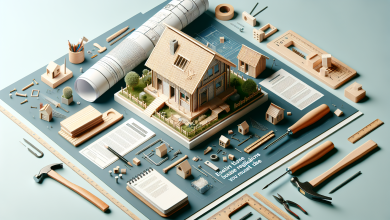Tiny House vs. Traditional Home: Which is Better?
Tiny House vs. Traditional Home: Which is Better?
The debate between tiny houses and traditional homes is gaining momentum. This article will explore the key differences, helping you determine which option may be better for your lifestyle. You will learn about costs, space considerations, lifestyle impacts, and practical matters that define both living environments.
Introduction to Tiny Houses and Traditional Homes
Tiny houses and traditional homes represent two distinct approaches to living. A tiny house is typically defined as a compact, often mobile dwelling that ranges from 100 to 400 square feet. These homes encourage a minimalist lifestyle and are often built with sustainability in mind.
In contrast, traditional homes are larger, usually starting from around 1,000 square feet and can go up significantly in size. They offer multiple rooms and spaces for family living and are generally designed for long-term stability and comfort. Understanding these definitions sets the stage for a deeper analysis of both housing types.
This distinction is essential as we explore the comparative analysis between the two options. Tiny House Safety: Essential Considerations for Owners hakkında daha fazla bilgi edinin.
Comparative Analysis: Tiny House vs. Traditional Home
When considering tiny houses versus traditional homes, cost and affordability are often at the forefront. Tiny houses can be significantly cheaper to purchase and maintain, with average costs ranging from $20,000 to $100,000 depending on size and materials. In contrast, traditional homes generally start at $200,000 and can go much higher depending on location and features.
Space and size are also critical considerations. While tiny homes promote minimalism and efficient living, traditional homes provide ample space for family gatherings, storage, and personal rooms. This difference can greatly impact lifestyle choices and comfort levels in daily life.
Ultimately, your choice may hinge on your budget and spatial needs.
Lifestyle Impacts of Tiny Living
Tiny living promotes a minimalist lifestyle, encouraging residents to prioritize experiences over possessions. This shift can lead to reduced stress and increased satisfaction, as fewer materials can mean less clutter. Additionally, many tiny homeowners report a strong commitment to sustainability, as these homes often utilize eco-friendly materials and lower energy consumption. Tiny House Design Trends to Watch in 2024 hakkında daha fazla bilgi edinin.
Moreover, tiny houses can foster community, as many tiny house dwellers live in communities designed for shared living. This setup can enhance social connections, providing a strong support network that traditional homes may lack in suburban areas.
Both lifestyles have unique impacts on personal satisfaction and community engagement.
Practical Considerations
Before deciding between a tiny house and a traditional home, it’s vital to consider zoning and legal issues. Many areas have restrictive zoning laws that can complicate tiny house living, making it challenging to find suitable locations. Traditional homes often face fewer zoning challenges, providing more options for buyers.
Financing and insurance options also differ significantly. Securing a mortgage for a tiny house can be more complex, as many lenders are unfamiliar with these types of properties. Traditional homes, on the other hand, typically have established financing and insurance pathways, making it easier for buyers to understand their options. Essential Tiny House Maintenance Tips for Longevity hakkında daha fazla bilgi edinin.
Understanding these practicalities can prevent future challenges in home ownership.
Conclusion: Making the Right Choice for You
Ultimately, the choice between a tiny house and a traditional home depends on personal preferences and lifestyle needs. If you prioritize affordability, minimalism, and mobility, a tiny house might be the ideal choice. However, if space and community are more important to you, a traditional home may better fit your requirements.
As housing trends continue to evolve, both options are likely to grow in popularity, reflecting changing attitudes towards ownership and sustainability. Consider your future needs and take the time to explore each option thoroughly.




